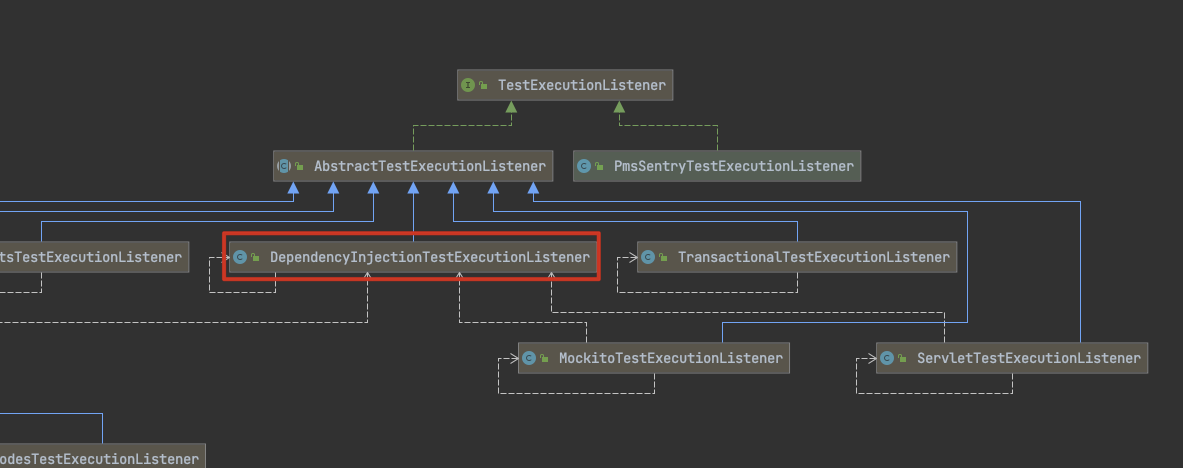④ 事务回滚原理
在前文单测类注入中我们知道.JUnit提供了一些监听器,允许 当单测方法执行时候去对单测上下文进行调整。所以呢事务回滚也是基于 这里的特性完成的。基于SpringBoot 2.1.x版本分析

源码分析#
Spring中为了适配不通的数据库,提供了事务平台的概念。 PlatformTransactionManager 只要实现了该接口
就允许对事务进行控制。具体事务的控制是通过工具类来处理的。 TransactionContextHolder 可以获取当前线程
执行的事务上下文。JUnit通过该工具拿到事务的上下文,然后对此做响应的修改。具体的
修改逻辑见下文注释。两句话解释清楚。
TransactionalTestExecutionListener
伪代码分析
// 单测方法执行前,移除容器原来的事务管理器,然后开启一个新的事务
@Override
public void beforeTestMethod(final TestContext testContext) throws Exception {
Method testMethod = testContext.getTestMethod();
Class<?> testClass = testContext.getTestClass();
Assert.notNull(testMethod, "Test method of supplied TestContext must not be null");
TransactionContext txContext = TransactionContextHolder.removeCurrentTransactionContext();
Assert.state(txContext == null, "Cannot start new transaction without ending existing transaction");
PlatformTransactionManager tm = null;
TransactionAttribute transactionAttribute = this.attributeSource.getTransactionAttribute(testMethod, testClass);
if (transactionAttribute != null) {
transactionAttribute = TestContextTransactionUtils.createDelegatingTransactionAttribute(testContext,
transactionAttribute);
if (logger.isDebugEnabled()) {
logger.debug("Explicit transaction definition [" + transactionAttribute +
"] found for test context " + testContext);
}
if (transactionAttribute.getPropagationBehavior() == TransactionDefinition.PROPAGATION_NOT_SUPPORTED) {
return;
}
tm = getTransactionManager(testContext, transactionAttribute.getQualifier());
Assert.state(tm != null,
() -> "Failed to retrieve PlatformTransactionManager for @Transactional test: " + testContext);
}
if (tm != null) {
txContext = new TransactionContext(testContext, tm, transactionAttribute, isRollback(testContext));
runBeforeTransactionMethods(testContext);
txContext.startTransaction();
TransactionContextHolder.setCurrentTransactionContext(txContext);
}
}
// 单测方法执行结束后,结束事务然后回滚或提交
@Override
public void afterTestMethod(TestContext testContext) throws Exception {
Method testMethod = testContext.getTestMethod();
Assert.notNull(testMethod, "The test method of the supplied TestContext must not be null");
TransactionContext txContext = TransactionContextHolder.removeCurrentTransactionContext();
// If there was (or perhaps still is) a transaction...
if (txContext != null) {
TransactionStatus transactionStatus = txContext.getTransactionStatus();
try {
// If the transaction is still active...
if (transactionStatus != null && !transactionStatus.isCompleted()) {
txContext.endTransaction();
}
}
finally {
runAfterTransactionMethods(testContext);
}
}
}
